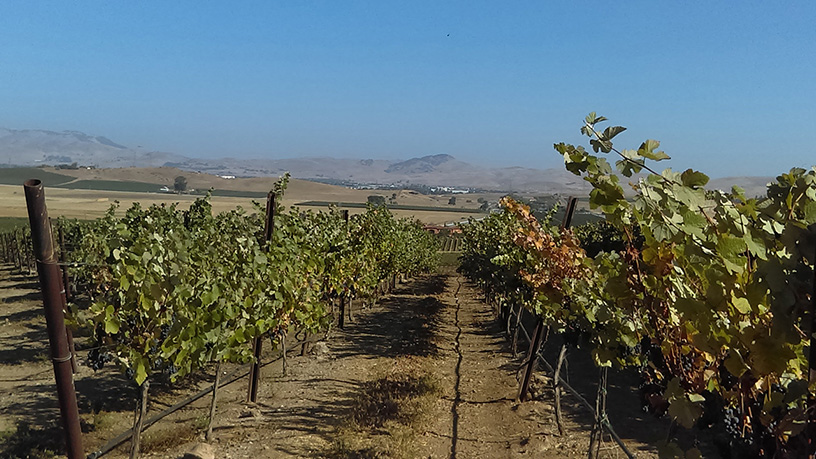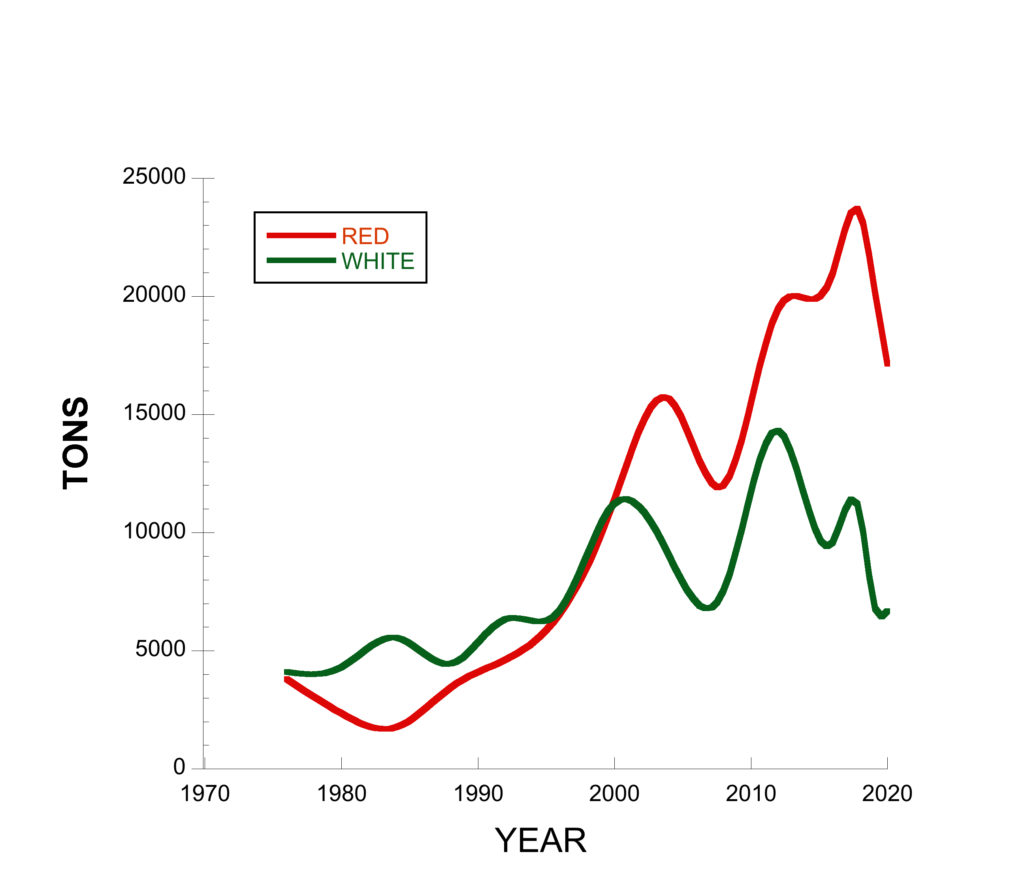The 2020 Harvest in Livermore Valley

The California Department of Food and Agriculture released its preliminary Grape Crush Report for the 2020 harvest. The report provides useful information about California’s annual grape harvest, listing the grape varieties, harvest tonnage, sugar levels, and prices charged by growers.
As you can imagine, 2020s harvest was one of the lightest in a long while. Tonnage was down across the board with some areas, like Napa Valley, harvesting 40% fewer grapes than in the year previous. Livermore harvested about 15% fewer tons in 2020 than in 2019 (see graph).
The decrease in harvested tons has been attributed to the fires, Covid, and a warmer growing season. We all know of the fires that broke out across the state last fall. The threat of smoke taint left many growers without buyers. The same can be said with Covid, as restaurant and tasting room lockdowns impacted wine sales. Many wineries didn’t produce wine this year in order to draw down inventories. This kept grape price pressure low; demand for grapes declined more than did the supply. Grape prices actually declined in 2020 from the previous year despite the lower yields.
In Livermore Valley, Cabernet Sauvignon remains the most harvested red-wine variety, a position it has maintained since 2003 when it unseated Merlot. This is not surprising. Cabernet Sauvignon commands the highest price and remains the most popular consumer varietal. The variety also performs exceptionally well here.
Petite Sirah is in second place, a position it has held since 2016. Zinfandel barely hangs on to third position, with Pinot Noir now nipping at its heels. Pinot Noir is following the popularity curve once held by Merlot, which had followed a similar trajectory in popularity until its fall from grace in the early 2000s. Today, Merlot barely holds the 5th spot for red wine production in Livermore Valley, its yield having declined by more than 50% since 2015.
I remain concerned for Cabernet Franc. A century ago, this varietal was considered among the best in Livermore Valley, better here than in its ancestral homelands in Bordeaux and the Loire. Today, Livermore Cabernet Franc continues to be a favorite of ours. Yet, yields of Cabernet Franc remain on the decline, accounting for less than 1% of total harvest in our valley.
Livermore white wine varieties continue to be dominated by Chardonnay and Sauvignon Blanc. And well they should, since Livermore Valley produces excellent examples of both of these wines. Interestingly, Semillon – a grape once highly prized in Livermore – has returned from near extinction to capture fourth place among the white varietals.
I hope to see grape yields return to normal levels in the next couple of years as we get a handle on Covid and develop mitigation strategies for fire. However, there are some headwinds peculiar for Livermore, which include consolidation (more vineyards under the same management) and upward price pressure from the increased cost of growing grapes. It is the upward price pressure that is most concerning. The higher priced vineyards in Livermore are pushing $4,000 per ton – comparable to the prices charged by quality vineyards in Sonoma, Napa, and Amador County. This might be good for growers, but not for local wineries. It is harder to sell a $40 wine from Livermore Valley than an $80 wine from Napa.




